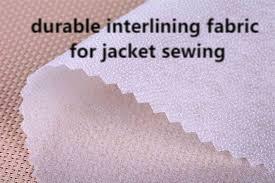A well-chosen Interlining placed between the outer fabric and facing enhances both garment shape and comfort, while the right Interlining also ensures long-term durability and wearer satisfaction. Incorporating this hidden layer early in the design process helps designers achieve precise silhouettes, reduce production errors, and maintain consistent quality throughout the garment lifecycle. Proper consideration of this component can transform ordinary fabrics into structured, well-performing apparel that meets both aesthetic and functional goals.
The Importance of Internal Support
Internal layers act as the backbone of a garment, stabilizing collars, cuffs, waistbands, and lapels. They prevent sagging, puckering, and distortion, ensuring the finished piece retains its intended form even after repeated wear and laundering. By reinforcing areas that experience the most tension, these hidden layers allow garments to maintain a polished, professional appearance.
Material Selection for Optimal Performance
Different outer fabrics require tailored internal supports. Lightweight, flowing textiles benefit from flexible, low-bulk layers that preserve drape, while medium-weight fabrics need soft yet supportive materials. Heavier textiles demand denser, more stabilizing layers to maintain structure. Evaluating fabric stretch, weave, and hand feel is crucial to selecting an internal layer that complements the garment without compromising comfort.
Application Methods and Production Precision
The method of attaching hidden layers directly impacts garment quality. Fusible supports need precise control over temperature, pressure, and dwell time to avoid adhesive seepage or delamination. Sewn-in supports require careful seam grading and trimming to prevent bulk accumulation. Consistent production processes and clear guidelines help minimize defects and maintain uniformity across all garments.
Interlining-Factory Solutions for Designers
Collaborating with Interlining-Factory provides access to a range of internal support materials, sample swatches, and technical guidance. Their expertise ensures that manufacturers can select suitable products, validate performance, and maintain high-quality standards. Reliable supplier partnerships shorten lead times and reduce the risk of inconsistencies during production.
Quality Assurance and End-User Comfort
Routine inspections, wash tests, and seam evaluations ensure that internal supports function as intended. Choosing soft, breathable layers enhances wearer comfort, while balancing structure and flexibility maintains overall garment performance. Monitoring these factors helps reduce returns, improve satisfaction, and supports a long-lasting product lifecycle.
By strategically integrating internal layers into design and production, garments achieve superior fit, durability, and user comfort. Manufacturers and designers can ensure consistent quality while supporting sustainable and efficient production practices. For more details, visit https://www.interlining-factory.com/news/what-is-interlining-types-applications-and-more.html




